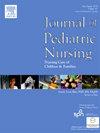Identification of risk factors for emergence delirium in children undergoing magnetic resonance imaging
IF 2.1
4区 医学
Q2 NURSING
Journal of Pediatric Nursing-Nursing Care of Children & Families
Pub Date : 2024-11-27
DOI:10.1016/j.pedn.2024.11.011
引用次数: 0
Abstract
Purpose
Emergence delirium (ED) remains an ongoing concern for children undergoing sedation/anesthesia. The purpose of this study was to identify risk factors for ED in a population of children from two to seven years of age undergoing sedation/anesthesia for magnetic resonance imaging.
Design and methods
This was a descriptive, observational study taking place in a free-standing midwestern pediatric hospital. The Child Induction Behavioral assessment (CIBA) and the Amsterdam Preoperative Anxiety and Information Scale (APAIS) were used to assess child/parent anxiety. The presence of ED was documented using the Pediatric Anesthesia Emergence Delirium (PAED) scale. Associations between ED demographic and clinical characteristics were assessed using Chi-square and Wilcoxon Rank Sum tests.
Results
Of the 136 children who underwent sedation/anesthesia for MRI, 23 (16.9 %) experienced ED. Although not significant, children who received the pre-medication midazolam experienced an increased incidence of ED (25.6 %) compared to those who did not (13.4 %, p = 0.09). Children who experienced ED took a significantly shorter time to arouse from sedation/anesthesia (median = 8 min) compared to those who did not experience ED (median = 15 min, p < 0.0001).
Conclusions
A shorter post-procedural arousal time was a significant risk factor associated with ED in this sample of children undergoing MRI.
Implications
It is unclear which pre-procedural factors predict children who will experience ED. There is a need for interdisciplinary research to identify interventions to decrease the incidence of pediatric ED. More research is needed to support the development of interventions to best support the safety of the child experiencing ED.
识别接受磁共振成像检查的儿童出现谵妄的风险因素
目的谵妄(ED)仍然是接受镇静/麻醉的儿童一直担心的问题。本研究旨在确定接受磁共振成像镇静/麻醉的 2 到 7 岁儿童中发生 ED 的风险因素。儿童诱导行为评估(CIBA)和阿姆斯特丹术前焦虑和信息量表(APAIS)用于评估儿童/家长的焦虑。使用小儿麻醉后谵妄(PAED)量表记录是否存在 ED。结果 在接受核磁共振成像镇静/麻醉的 136 名儿童中,有 23 名(16.9%)经历过 ED。与未使用咪达唑仑的患儿(13.4%,P = 0.09)相比,使用咪达唑仑前药物的患儿发生 ED 的几率(25.6%)有所增加,但影响不大。在接受磁共振成像检查的儿童样本中,较短的术后唤醒时间是与 ED 相关的重要风险因素。有必要进行跨学科研究,以确定减少儿科 ED 发生率的干预措施。需要开展更多的研究来支持干预措施的开发,从而为经历 ED 的儿童的安全提供最佳支持。
本文章由计算机程序翻译,如有差异,请以英文原文为准。
求助全文
约1分钟内获得全文
求助全文
来源期刊

Journal of Pediatric Nursing-Nursing Care of Children & Families
NURSING-PEDIATRICS
CiteScore
3.70
自引率
8.30%
发文量
291
审稿时长
65 days
期刊介绍:
Official Journal of the Society of Pediatric Nurses and the Pediatric Endocrinology Nursing Society (PENS)
The Journal of Pediatric Nursing: Nursing Care of Children and Families (JPN) is interested in publishing evidence-based practice, quality improvement, theory, and research papers on a variety of topics from US and international authors. JPN is the official journal of the Society of Pediatric Nurses and the Pediatric Endocrinology Nursing Society. Cecily L. Betz, PhD, RN, FAAN is the Founder and Editor in Chief.
Journal content covers the life span from birth to adolescence. Submissions should be pertinent to the nursing care needs of healthy and ill infants, children, and adolescents, addressing their biopsychosocial needs. JPN also features the following regular columns for which authors may submit brief papers: Hot Topics and Technology.
 求助内容:
求助内容: 应助结果提醒方式:
应助结果提醒方式:


